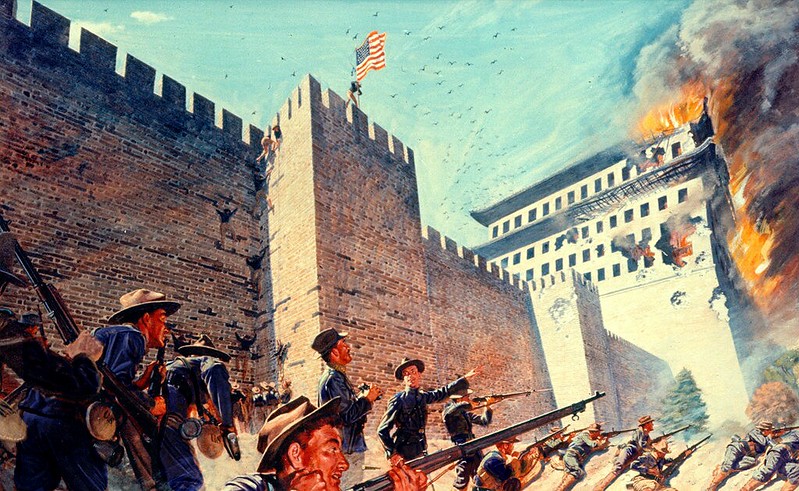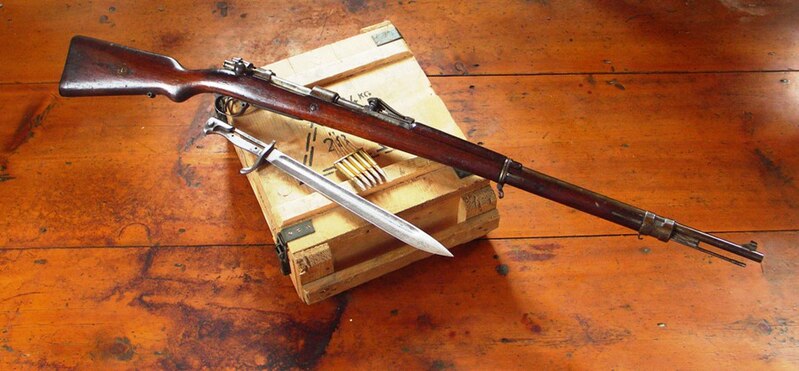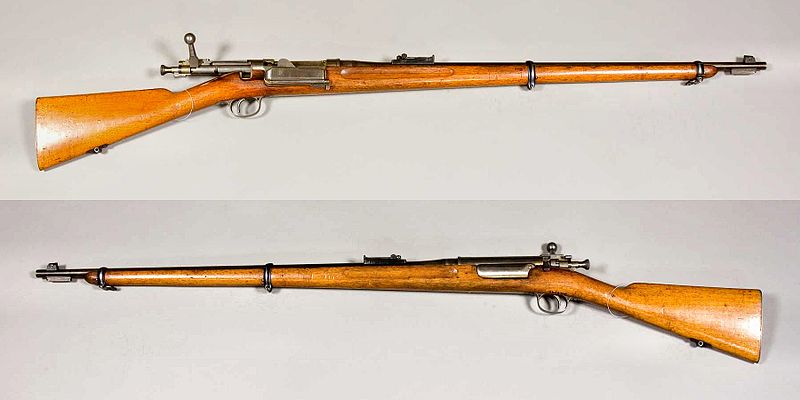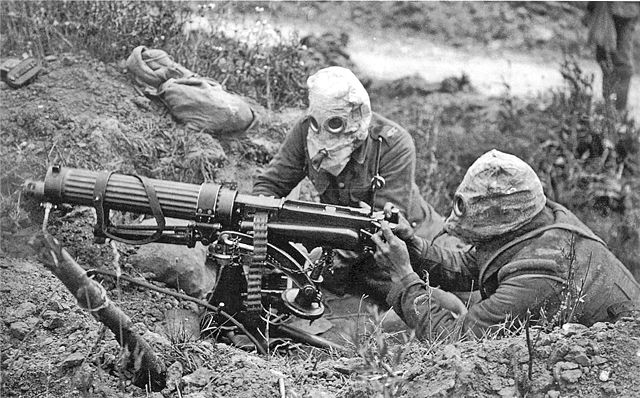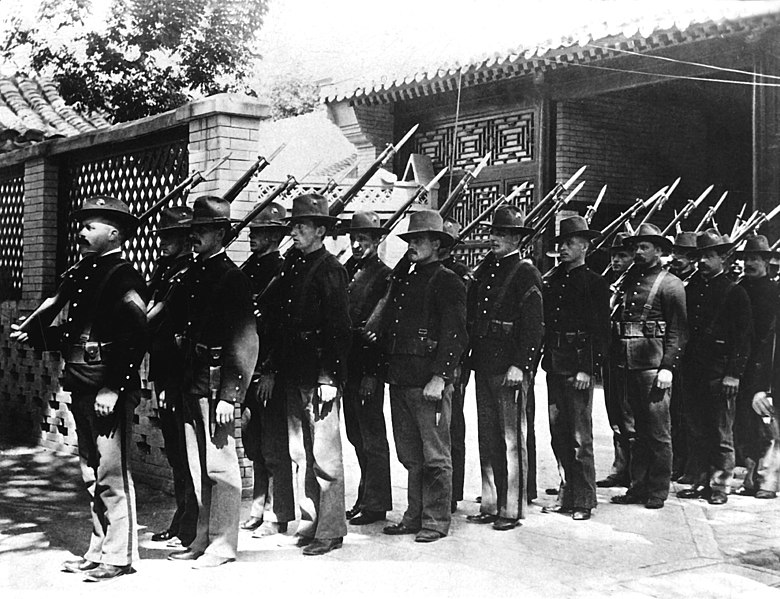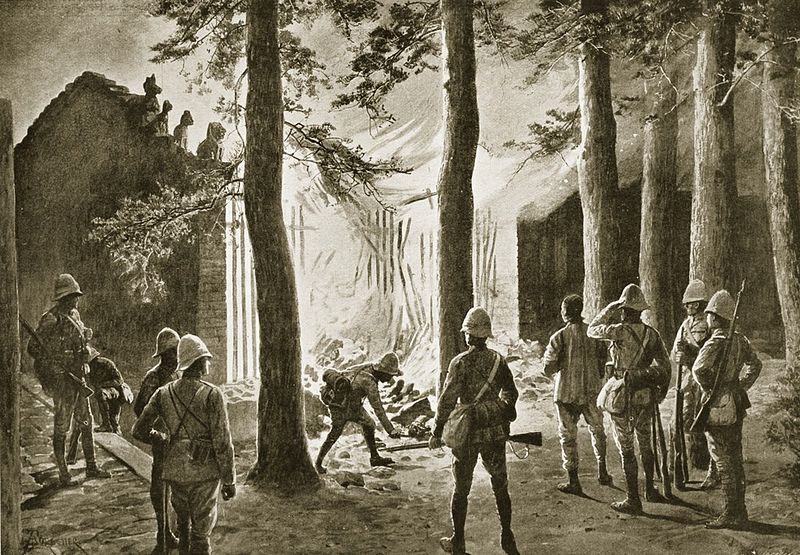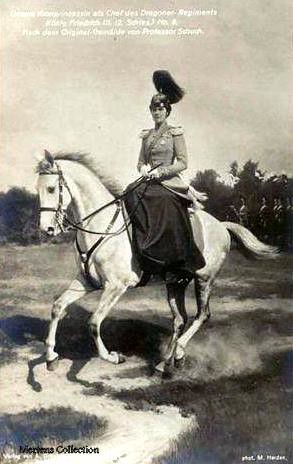THE CUSTER YOUTH BRIGADE
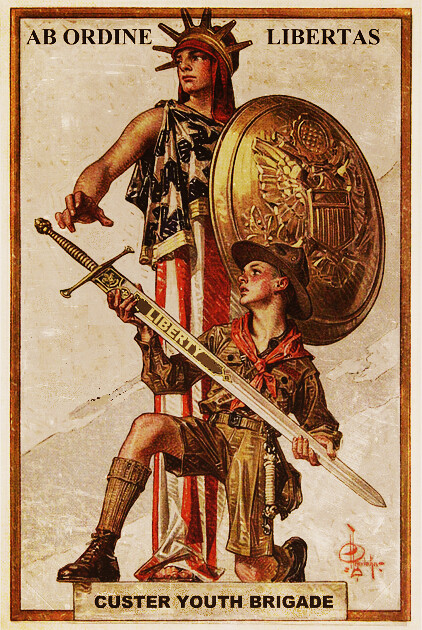
Patriot-Comrades, let us tell you the news,
Our heads have been wet with the midnight dew.
We've been down on bended knee,
a-talking to the Man from Galilee.
He spoke to us in a voice so sweet
We thought we heard the marching of the Angels' feet.
He called our name and our hearts stood still
When He said, "Boys, go do My Will!"
-A popular marching song of the Custer Youth Brigade, 1902

Patriot-Comrades, let us tell you the news,
Our heads have been wet with the midnight dew.
We've been down on bended knee,
a-talking to the Man from Galilee.
He spoke to us in a voice so sweet
We thought we heard the marching of the Angels' feet.
He called our name and our hearts stood still
When He said, "Boys, go do My Will!"
-A popular marching song of the Custer Youth Brigade, 1902
In late 1901, Union Secretary of War Warren G. Harding approached Custer and Bryan about the matter of the nation's children. Harding claimed that the nationalized public schools could only do so much to prevent "subversive and unpatriotic thoughts" from entering children's heads. Besides, the schools, like any other, were closed during the summer. During those summers, the Military Police could "barely keep up" with the crimes being committed by "urchins." Harding insisted that "America's children need discipline, no matter what season, no matter what their place in life, no matter their age." The Secretary of War then unveiled his plans for a national "Youth Brigade," as he called it. The plan was for all American children aged 10 to 18 to join together in the spirit of "patriotism and Christian brotherhood and sisterhood" and and learn useful skills, develop character, and serve their country. What Harding really meant was a national armed forces branch to indoctrinate the Union's youths so utterly thoroughly, they'd report their own parents if they did something "subversive." Harding claimed, "The relationship between parents and children is important. This will not change. But the relationship between the State and its citizens, including children, is even more important, and it must be strengthened. Just as it is the parents' responsibility to turn our good children, it is the State's responsibility to turn out good citizens."
Custer was skeptical, and feared parents might turn on him, at least a small number. Finally, though, Harding came up with the name "Custer Youth Brigade," knowing a little flattery made Custer accept anything, and the creation of the organization was approved. On July 4th, 1902, the Custer Youth Brigade made its first public appearance, after months of registering and preparing youths. In a huge event in Philadelphia, almost one million members gathered and held the biggest rally in the history of mankind up to that point. It was christened the "Youth Brigade Jamboree."
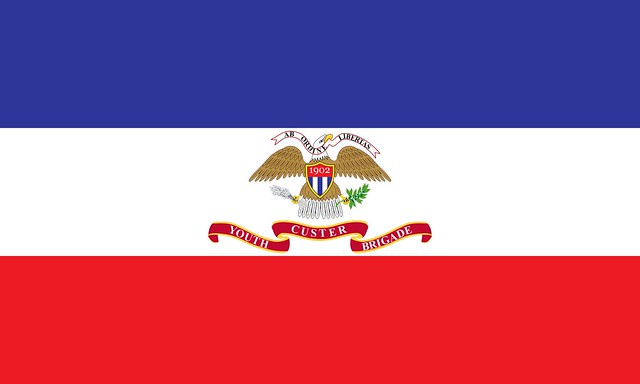

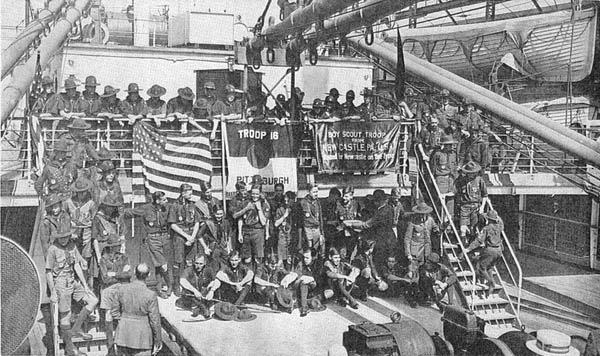

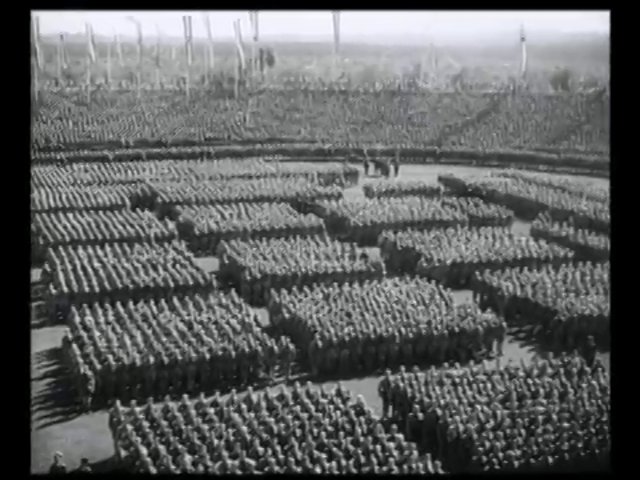

Custer was skeptical, and feared parents might turn on him, at least a small number. Finally, though, Harding came up with the name "Custer Youth Brigade," knowing a little flattery made Custer accept anything, and the creation of the organization was approved. On July 4th, 1902, the Custer Youth Brigade made its first public appearance, after months of registering and preparing youths. In a huge event in Philadelphia, almost one million members gathered and held the biggest rally in the history of mankind up to that point. It was christened the "Youth Brigade Jamboree."






The rally shocked the world, and thousands of newspaper front pages had headlines like "REPUBLICAN UNION MILITARIZES CHILDREN" plastered across the front. In reality, though, up to that point, the members had not done anything overtly military, though they did all wear uniforms and learn how to shoot. Most activities centered on reading, outdoor skills, and remembering patriotic songs and chants.


Headmaster-Marshal Roosevelt at the Custer Youth Brigade Jamboree
The new "Headmaster-Marshal," the man in charge of the CYB, was a 44 year-old New Yorker named Theodore Roosevelt. Roosevelt was a young military officer and outdoors enthusiast who had served as a high-ranking Military Police officer in his native New York since the 1880s, and had also written a number of military and history books that had become required reading in all public schools. So, when he took the gilded baton of "Headmaster-Marshal," he already held a high degree of importance with America's children. Roosevelt made his first public appearance as Headmaster-Marshal of the CYB at the Jamboree. He delivered a forty-five-minute speech that was wildly popular, and he swore the CYB would become a "bastion of freedom, order, and equality." The speech made Roosevelt a nationally-popular figure, and he became a new celebrity in world politics.


Headmaster-Marshal Roosevelt at the Custer Youth Brigade Jamboree
CHILD SOLDIERS IN THE KOREAN CONFLICT
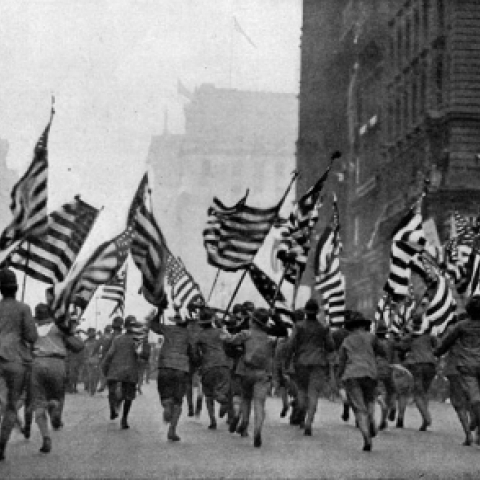
CYB members celebrate the Union declaration of war on China and wave Manifest Destiny Party flags in the streets of Philadelphia (1903)

CYB members celebrate the Union declaration of war on China and wave Manifest Destiny Party flags in the streets of Philadelphia (1903)
Needless to say, it was not long before Harding morphed the Custer Youth Brigade into something else. As Secretary of War, he was the overseer of all the armed forces branches, and the CYB was counted as one, much to the chagrin of Secretary of Education William Howard Taft. Harding was insistent that all CYB members be equipped with free or low-priced firearms, each a pistol and a rifle, and a backpack filled with military-issue items (including cigarettes). Headmaster-Marshal Roosevelt agreed with this request, and Custer finally caved and approved. Though it cost a hefty price to purchase the equipment, the firearms industry boomed, and Colt, the same company famous for the "Coffee Grinder" autoguns, received a government contract to fulfill the order. With millions of members needing equipped (it became mandatory to join the CYB two months after the Jamboree), the Union suddenly became the most heavily-armed nation on earth. Special care was taken to keep the guns from the wrong hands, and any Inferiors caught possessing a CYB specially-branded gun (all were branded on the stock) were charged and faced potential death by firing squad.
By early 1903, rising tensions in Asia had the great powers on high alert, and for once, it wasn't against each other, but against the Chinese. The Qing Empire was falling apart at last, and in the face of increasing Dutch and European influence, a fanatic racialist Chinese terrorist organization called the "Great Harmonious Society" had arose. The GHS were dedicated to murdering missionaries and wreaking havoc against Western powers in Asia. Almost all powerful countries, from the Catholic Tripartite Empire to the Protestant/AFC Republican Union, had missionaries in China trying to gain influence and sometimes actually just wanting to help the "backward heathen Chinesers." On February 5th, a period began in north-eastern China called "Bloody February." Over 20,000 GHS terrorists stormed Westerner settlements and burned European ships and cargo. Over 2000 Imperial and Dutch missionaries and their families were captured, raped, and beheaded. Napoleon IV and Louis Napoleon II declared renewed hostilities immediately.
The Republican Union, meanwhile, spoke against the massacres, but only halfheartedly, as they were Catholics. The Republican Union had few interests in China, but in nearby Qing-controlled Korea, something was about to happen that would suck the Union into war. On March 21st, 1903, Korean GHS troops laid siege to the Union embassy and church in Pyongyang. The meager security of 50 marine held out valiantly, taking out 500 GHS men before finally being overrun. They were all viciously slaughtered, including fifteen children. Public outcry was immense, and Custer was livid. The First Consul took to the airwaves on talkieboxes nationwide.
By early 1903, rising tensions in Asia had the great powers on high alert, and for once, it wasn't against each other, but against the Chinese. The Qing Empire was falling apart at last, and in the face of increasing Dutch and European influence, a fanatic racialist Chinese terrorist organization called the "Great Harmonious Society" had arose. The GHS were dedicated to murdering missionaries and wreaking havoc against Western powers in Asia. Almost all powerful countries, from the Catholic Tripartite Empire to the Protestant/AFC Republican Union, had missionaries in China trying to gain influence and sometimes actually just wanting to help the "backward heathen Chinesers." On February 5th, a period began in north-eastern China called "Bloody February." Over 20,000 GHS terrorists stormed Westerner settlements and burned European ships and cargo. Over 2000 Imperial and Dutch missionaries and their families were captured, raped, and beheaded. Napoleon IV and Louis Napoleon II declared renewed hostilities immediately.
The Republican Union, meanwhile, spoke against the massacres, but only halfheartedly, as they were Catholics. The Republican Union had few interests in China, but in nearby Qing-controlled Korea, something was about to happen that would suck the Union into war. On March 21st, 1903, Korean GHS troops laid siege to the Union embassy and church in Pyongyang. The meager security of 50 marine held out valiantly, taking out 500 GHS men before finally being overrun. They were all viciously slaughtered, including fifteen children. Public outcry was immense, and Custer was livid. The First Consul took to the airwaves on talkieboxes nationwide.
"Today, my fellow citizens, our way of life, our very freedom, came under attack in a series of deliberate and deadly heathen terrorist acts. The victims were in our embassy or in their offices or churches -- secretaries, businessmen and women, military and government workers, and missionaries trying to spread the Good Word. Fathers and mothers. Friends and neighbors. Dozens of lives were suddenly ended by evil, despicable acts of Yellow savagery. These acts of mass murder were intended to frighten our nation into chaos and retreat. But they have failed. Our country is strong. A great people has been moved to defend a great nation. Immediately following the attack, I implemented our government's emergency response plans. Our military is powerful, and it's prepared. Our embassy is AMERICAN SOIL. An attack on American soil will be met with ruthlessness, firepower, and no mercy for the heathen Yellow aggressors. Our enemies shall pay. The Fleet of the Pacific has been called into action. Thousands of sailors and marines are on their way to punish our foes. America, our dear Union, has stared down enemies before, and it will do so again. February 5th, 1903. A date which shall forever live in infamy. None of us will ever forget this day, yet we go forward to defend freedom and all that is good and just in our world. As of this minute, the glorious Republican Union is at war with the decadent Qing Empire. We shall prevail, and punish these transgressions with a high hand of righteousness. Thank you. Good night. God bless the Union. All Hail the People!"
-Custer's Talkiebox Declaration of War on China

The Custer Youth Brigade had within the course of a year turned into a second army. Despite mostly doing desk-work and minor duties, the CYB "soldiers" were treated like adults, and exactly 189 would lose their lives fighting against the Koreans. Most of the 189 went down "guns-blazing" in heroic last stands. Several CYB regiments showed extraordinary courage under fire, and 220 in all received the Medal of Courage, the Union's highest military decoration. 500 others received the Purple Heart for wounds. 2000 would receive lesser medals, and all were awarded the yellow-white-and-blue ribbon marking them as veterans of the Sino-American War. Participating at such young ages, it wouldn't be until 2000 that the last CYB veteran of the conflict would pass away (Sergeant-Cadet Leroy Walker, age 112).
(more on China in the next chapter, featuring the full war and Joe Steele, Calvin Coolidge, and several other characters involvement in it!)
-Custer's Talkiebox Declaration of War on China
The streets of the Union once again filled with flag-waving zealots, rallying against the heathen foe. Harding had telegraphed the declaration of war to the Qing government just two before. The most eager and radical of the crowds were soldiers and CYB members. Harding and Roosevelt stunned the world by sending over 10,000 male CYB members, aged 15 to 18, over to Korea in the next wave of reinforcements.

CYB boys pose for a photo near Seoul, Christmas, 1903
The Custer Youth Brigade had within the course of a year turned into a second army. Despite mostly doing desk-work and minor duties, the CYB "soldiers" were treated like adults, and exactly 189 would lose their lives fighting against the Koreans. Most of the 189 went down "guns-blazing" in heroic last stands. Several CYB regiments showed extraordinary courage under fire, and 220 in all received the Medal of Courage, the Union's highest military decoration. 500 others received the Purple Heart for wounds. 2000 would receive lesser medals, and all were awarded the yellow-white-and-blue ribbon marking them as veterans of the Sino-American War. Participating at such young ages, it wouldn't be until 2000 that the last CYB veteran of the conflict would pass away (Sergeant-Cadet Leroy Walker, age 112).
(more on China in the next chapter, featuring the full war and Joe Steele, Calvin Coolidge, and several other characters involvement in it!)
Last edited:
